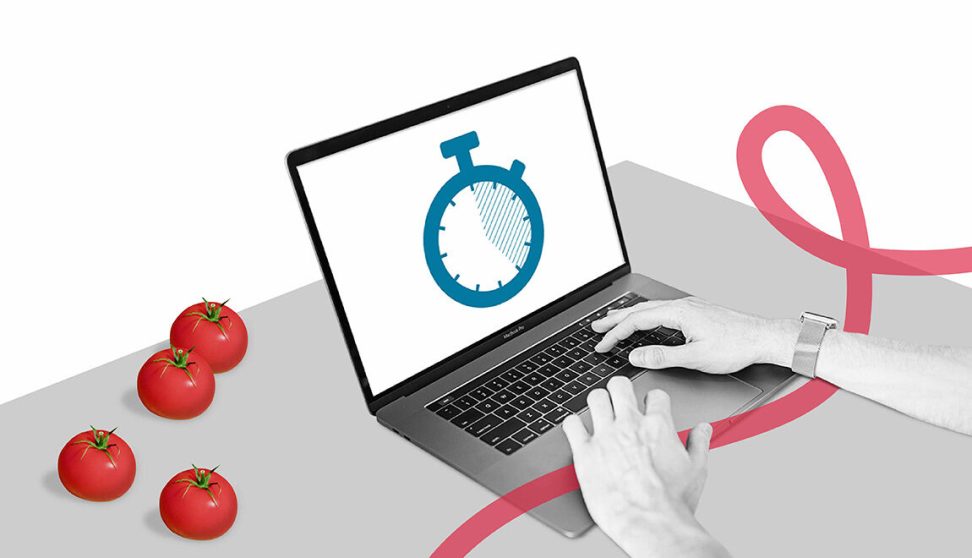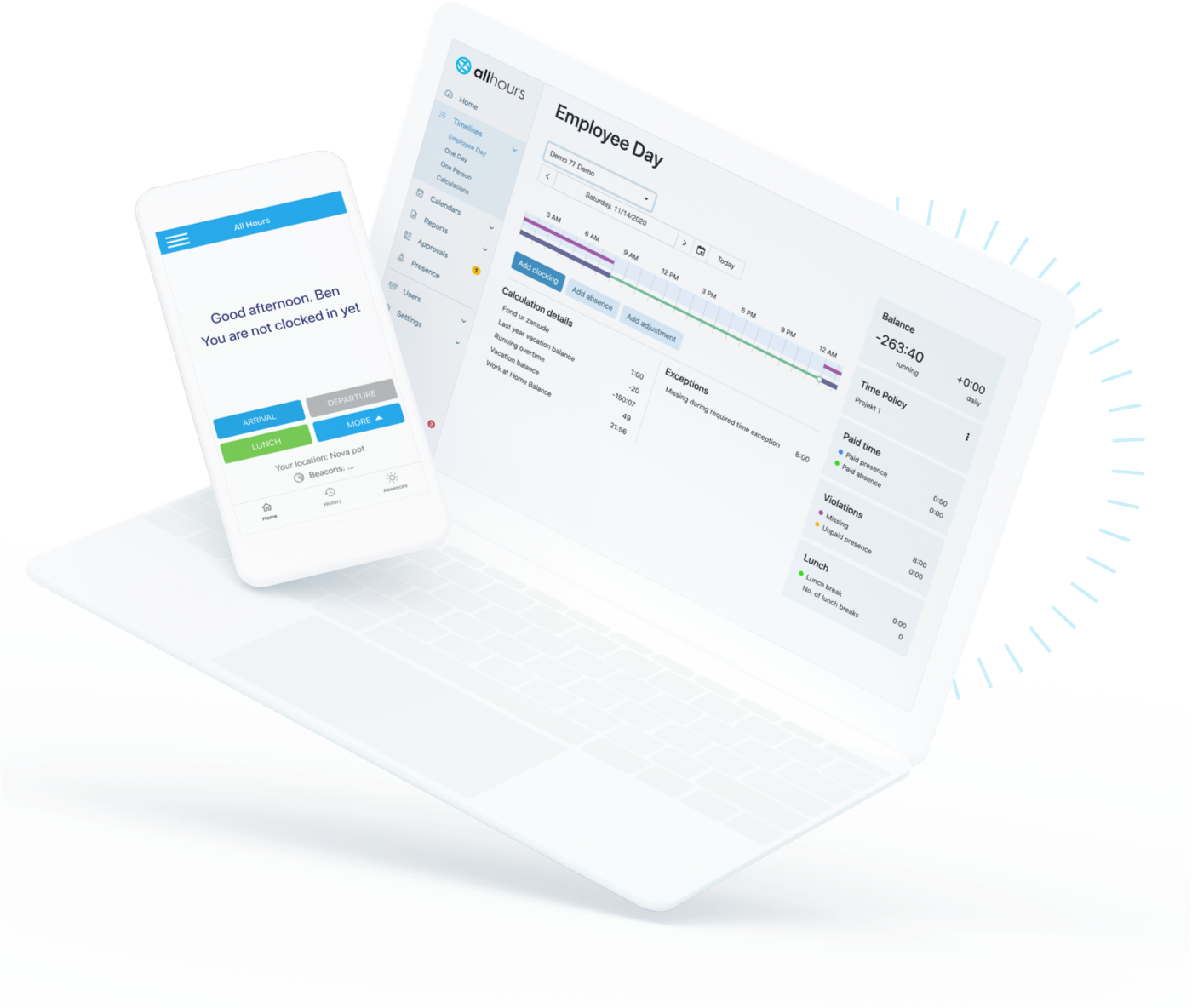The Pomodoro Technique: turn time from your enemy into your ally

Do you struggle with time management? You are not alone. It’s a scenario many of us encounter on daily basis.
Imagine the following three situations …
- Being constantly busy - but never getting anything completely done.
- Trying to focus – but there is always a distraction on the way calling for your immediate reaction.
- Racing against the clock to meet deadlines – but they are always out of reach, and new ones keep popping up.
Do they sound familiar?
What are the consequences? Loss of memory or concentration, a lack of sleep, frustration for having lost lots of time, struggling to organize thoughts, the feeling of guilt that comes from procrastinating.
In your attempts to turn time into your valuable ally, one should not overlook an efficient method, inspired by a little gadget; a kitchen timer to be exact. It is called the Pomodoro Technique, and it’s used by over 2 million people.
In a nutshell, it breaks your workload into smaller, more manageable tasks. You work without interruption for 25 minutes, take a five-minute breather, repeat that four times, and then take a 15 - to 30-minute break.
Easy, simple, efficient.
- Kitchen inspiration for working less and accomplishing more
- The six steps of the Pomodoro technique
- 1. Get a to-do list and choose a task
- 2. Set your timer for 25 minutes, and focus on a single task until the timer rings
- 3. Work on the task until the Pomodoro rings
- 4. When your session ends, mark off one Pomodoro
- 5. Enjoy a five-minute break. Your brain will thank you later.
- 6. After four Pomodoros, take a longer, more restorative 15-30 minute break
- A rule of 3 rules
- What do I need to start?
- Boring, or hard, or both – finish it!
- The main advantages of the Pomodoro Technique
- Feel less busy while getting more done
- By the way, are you still hungry? Here are some additional tips.
- Take photos of what you've achieved
- Assign time for 'interruptions'
- Meetings should be no longer than 60 minutes
Kitchen inspiration for working less and accomplishing more
Time management is mostly about being conscious of what you do, when you do it, and why. But this kind of focus is rare and hard to attempt. In many cases, in the end, it is you versus the clock.
To help you in the race against time, regain control, and to be be more productive, focused, and motivated, we have taken a deeper look at the Pomodoro Technique, a time-management tool developed in the 1980s by Francesco Cirillo, an Italian software developer who found that using his tomato-shaped kitchen timer (hence the name- “Pomodoro” means tomato in Italian) boosted productivity big time.
Initially, Cirillo created the system to help him get through the frustration of his low productivity at university. It quickly became extremely popular - adopted by time management experts, professional teams and nowadays even as a personal productivity system.
The Pomodoro Technique may be the approach for you if you are in favour of rules and formulas without a lot of excess theory (almost like a cooking recipe for efficiency). Many different people rave about how this tool helped them improve their focus and increase their productivity.
It is funny, though, especially for those diligent workers who never seem to rest, and for whom the idea of working means long chunks of time.
Following the main principle of the Pomodoro Technique - splitting up their workday and even wasting time on breaks – is a major point of contention for them, and as such not something they would give the nod to immediately. Even still, a lot of sceptics turn into fans in the end.
But why?
The six steps of the Pomodoro technique
Over half of all workday distractions are self-inflicted — meaning we pull ourselves out of focus. If you are all about getting your mind in the zone to finish your tasks, the Pomodoro Technique suggests a few steps to this end.
Though the inventor of this method wrote a 130-page book about it, the biggest strength is its simplicity. It is built on six basic steps:
1. Get a to-do list and choose a task
At this point, you should know what your priorities are and have your daily to-do list mapped out. It does not matter what your task is regarding, what matters is that it’s something that deserves your full, undivided attention.
2. Set your timer for 25 minutes, and focus on a single task until the timer rings
When the timer starts, the mind immediately goes into focus mode. Pomodoro Technique trainers advise you to make a small oath to yourself: “I will spend 25 minutes on this task, and I will not interrupt myself, intensely working on this task without distractions.”
This is key.
For example:
- Do not check your emails.
- Do not answer the phone unless it is an emergency.
- Do not reply to any texts.
- Do not visit Facebook or other social media sites.
If something very important interrupts your workflow, abandon the Pomodoro (each 25-minute block of work) and start again later.
3. Work on the task until the Pomodoro rings
Immerse yourself in the task for the next 25 minutes. Again, put your phone on airplane mode, and dedicate all your concentration it.
If you suddenly realize you have something else you need to do, like you forgot to answer the email, or return a call, write the task down on a sheet of paper.
4. When your session ends, mark off one Pomodoro
As the title suggests, when your session ends, mark off one Pomodoro.
5. Enjoy a five-minute break. Your brain will thank you later.
Breathe deep, meditate, grab a cup of coffee, go for a short walk or do something else relaxing; do a quick organizational chore, like tidying up your work bag … Anything that gives you some distance from your desk and gets your blood flowing.
However, Pomodoro Technique trainers warn, " five minutes go by faster than you'd think, so don't commit to anything too taxing or absorbing, or it will be difficult to get back into the zone once the break is over.”
6. After four Pomodoros, take a longer, more restorative 15-30 minute break
Once you’ve completed four Pomodoros, you can take a longer break. Your brain will use this time to assimilate new information and rest before the next round of Pomodoros. Rewarding yourself for making progress is part of success.
You can repeat this cycle as many times as you’d like, but the usual portion of Pomodoros is six 25-minute sessions.
And don’t forget to mark spent time with a good time tracker.
A rule of 3 rules
Additionally, the Pomodoro practice also includes three ground rules for channeling your energy into focusing on tasks.
Rule no. 1. Break a complex task down into manageable, concrete chunks.
If a task requires more than four Pomodoros, it needs to be divided into actionable steps. Sticking to this rule will help ensure you make clear progress on your projects.
Rule no. 2. Small tasks go together.
Any task that will take less than one Pomodoro should be combined with other simple tasks. For example, "set a dentist appointment", “order food” and "read an article" could go together in one session.
Rule no. 3. Once a Pomodoro is set, it must ring.
The Pomodoro is an indivisible unit of time and cannot be broken, especially not to check incoming emails, team chats, or text messages. Any ideas, tasks, or requests that come up should be taken note of to come back to later.
What do I need to start?
To learn how to work with time in the Pomodoro Technique you only need three things: a pen, some paper, and a kitchen timer.
If you are in a more digital mood, you can also skip the old-fashioned equipment and use a variety of online Pomodoro timers or apps, like Pomofocus, Clockwork Tomato, Pomodorium, Tomighty, and many other Pomodoro applications available for iPhone and Android devices.
Boring, or hard, or both – finish it!
The world’s largest online mental health and behavioral science destination, Psychology today, suggests that the Pomodoro technique is extremely useful when we are challenged by work that is dull or hard or both.
For example, documentation or billing, tax preparation, or thank-you notes following a party.
If there is something that really must be done, and you can’t outsource or delegate it, the Pomodoro Technique is a great way to commit 25 minutes of your time to that less exciting task.
The main advantages of the Pomodoro Technique
How will the Pomodoro Technique change you? In what way will it help? Here are the main benefits:
- Handle interruptions: No more mistakes due to lack of concentration. No more incorrect estimates, reworking, stress, and overtime.
- Reduce the length and number of meetings: No more long, exhausting, and useless meetings.
- Reduce estimation errors: No more incorrect estimates on complex, undefined, and uncertain tasks.
- Improve motivation by improving the content of work: No more lack of confidence, lack of responsibility and lack of trust between team members.
- Transform time from an enemy to an ally to achieve your goals: No more work under pressure. No more tensions between team members. No more fear of being accountable.
- Meet deadlines without time pressure: No more missed deadlines and costly delays.
- Share the same point of view about what to do with your team members: No more doubts about what to do, who has to do what, and when something will be done.
- Create an effective team timetable to reach multiple goals, handle unplanned events, tasks, emergencies and change: No more bottlenecks and interruptions. No more friction between team members.
- Reduce the complexity of your goals: No more unmanageable, and unreachable goals.
- Optimize the interactions between team members: No communication overflow. No more thousands of instant messages, emails, and calls interrupting your workflow.
Feel less busy while getting more done
In today’s fast-paced, time-poor environment, it’s normal to want to regain some control over your day. We are constantly pulled between things that are screaming for our attention and tasks we know we need to get done.
If enough of us pushed back, maybe together we could establish a new normal, and make ourselves a whole lot happier in the process... but until then, there is nothing to do but improve ourselves and become more productive.
Based on more than two decades of refinement and thinking, the Pomodoro Technique is easy to understand and use. It empowers you to focus your mind on what needs attention at that precise moment.
It’s simple, and that is the beauty of it: work, break; work, break; work, break. Achieve your goals, one Pomodoro at a time.
By the way, are you still hungry? Here are some additional tips.
In case you love tomatoes, but are still feeling like you could have
another bite of this kind of wisdom, here are some additional tips for the
users of the Pomodoro Technique from Francesco Cirillo:
Take photos of what you've achieved
To reward yourself for completing a 25-minute session of focused work, you should take a picture and share it. Cirillo said: “You can use a WhatsApp group, as we do.
Take a screenshot or photo of what you’ve done and post it with a brief comment. The team is always updated on the status of the different set goals. At the end of the day, briefly review the photos with the team and exchange feedback.”
Assign time for 'interruptions'
During the day, colleagues and clients are likely to interrupt you with various demands, which disturbs your regular workflow. Define a period where you deal with all these requests. Create a daily time slot of one Pomodoro – or more if necessary – to meet that demand.
“I recommend creating this slot immediately after lunch, which is not the best time for doing complex activities.” He added that if you are strict about this, clients and colleagues will start automatically contacting you in the assigned slot.
Meetings should be no longer than 60 minutes
The title says it all. And don't forget to send an agenda in advance.
With the Pomodoro technique you can definitely Work smarter, not harder.









